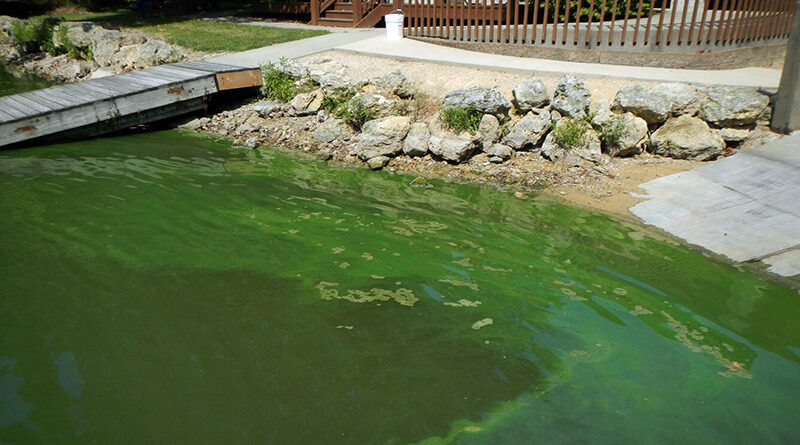Harmful Algal Blooms
Shoreline property owners are becoming increasingly concerned about algal blooms.
What is an algal bloom?
It is the rapid uncontrolled growth of algae or algae-like bacteria in water.
What Causes Algal Blooms?
The main culprit is phosphorus. Phosphorus occurs naturally and in the appropriate amounts isn’t necessarily cause for concern, in fact it’s needed for plant and animal life. Algae also occurs naturally in lakes and is an important food source for invertebrates. When everything is in balance, no harm is done.
However, when too much phosphorus gets into our lakes, it’s time to raise our level of concern!
Add the following elements and we have the recipe for an algal bloom:
• An increase in other nutrients
– primarily nitrogen
• Warm water
• Sunny days
• Still water
And of course, our activities can
exacerbate the issue with:
• Leaching septic systems and
effluent from sewage treatment plants
• Agriculture runoff
• Shoreline development
• Urban runoff
Cyanobacteria, more commonly known as blue-green algae, is often to blame for harmful algal blooms in freshwater systems. The right conditions cause cyanobacteria to quickly grow. Large numbers can collect at the surface of the lake. However, they don’t just appear at the surface, blooms can also occur below the surface. They are often blue-green in colour and can look like pea soup or turquoise paint forming foam, mats, scum and clumps. And they smell! Fresh blooms can smell like freshly mowed grass whereas older blooms can smell like rotting garbage.
How Long do They Last?
While algal blooms can happen throughout the year, the peak season is typically late summer and early fall. How long they last really depends on a number of factors, including wave action. Most times they are short lived and can dissipate within days or a few weeks. To be sure of water quality for the safety of your family and pets, you should contact your local health office or provincial government office that manages water.
Should We be Concerned about
Algal Blooms?
Yes! Not only can an algal bloom look and smell bad, but it can also make water unsafe for recreational use. As the algae die and is decomposed by bacteria, oxygen can be removed from the water resulting in fish deaths. While not all algal blooms are toxic, some are and can be dangerous if ingested by wildlife, livestock, pets and people.
Steps to Prevent Algal Blooms
• Check septic systems to make sure
they are working properly.
• Keep livestock away from the water.
• Maintain a vegetative buffer on shoreline
properties to trap and filter nutrients.
• Limit your use of fertilizers.
• Use phosphate-free products.
For more information on how you can show your lake some love, visit LoveYourLake.ca. Love Your Lake is a shoreline assessment program developed by the Canadian Wildlife Federation and Watersheds Canada.
Written by Terri-Lee Reid, Freshwater Researcher with the Canadian Wildlife Federation
Photo Credit: U.S. Geological Survey/photo by Jennifer L Graham




